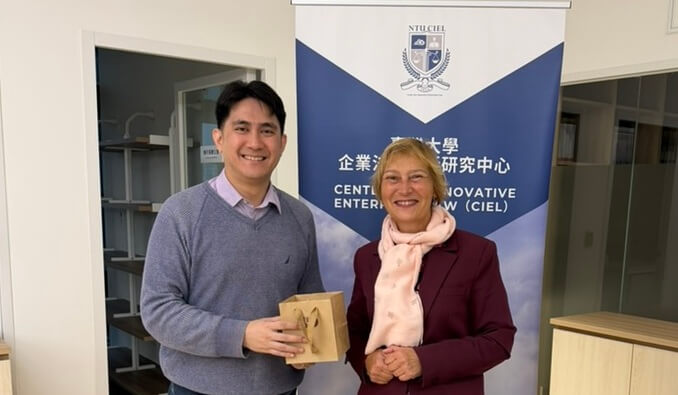文章大綱
On November 3, 2025, CIEL was honored to welcome Professor Florence G’Sell from Stanford Law School for an academic exchange. She engaged in an in-depth dialogue with CIEL Deputy Director Professor Yueh-Ping Yang and Professor Chao-Hung Chen on the current developments of virtual assets, artificial intelligence, and other aspects of digital laws, examined through comparative […]
On November 3, 2025, CIEL was honored to welcome Professor Florence G’Sell from Stanford Law School for an academic exchange. She engaged in an in-depth dialogue with CIEL Deputy Director Professor Yueh-Ping Yang and Professor Chao-Hung Chen on the current developments of virtual assets, artificial intelligence, and other aspects of digital laws, examined through comparative perspectives from Europe, the United States, and Asia.
🔹 Trends in Virtual Asset Regulation Across Asia
Asian jurisdictions exhibit divergent regulatory approaches to virtual assets. Japan was among the first to establish rules for stablecoins; Singapore adopts a principles-based regulatory model; Hong Kong adopts a comprehensive and rigorous framework; and South Korea continues to show a high level of regulatory attention toward virtual assets. In Taiwan, the government is actively promoting the Virtual Asset Service Act, which covers virtual asset service providers, stablecoins, and other related issues, and it is expected to be submitted to the Legislative Yuan for deliberation.
🔹 Differences in Regulatory Cultures Across Europe, the U.S., and Asia
Europe adopts a rule-based approach with comprehensive regulatory frameworks for virtual assets and artificial intelligence. However, its implementation progresses relatively slowly due to differences among its member states.The United States tends to be market-driven, with a relatively light-touch or deregulatory stance. Asia, by contrast, could be viewed as taking a middle-ground approach between Europe and the U.S., featuring pragmatic and hybrid regulatory strategies that balance flexibility and efficiency—making the region particularly significant for comparative legal studies in this area.
🔹 The Future Integration of Blockchain and AI
The integration of blockchain and AI can be seen as an next-generation model of existing blockchain-smart contract integrations, which has the potential to enhance the capabilities of both technologies. However, it may also introduce greater uncertainty, less explainability, and increased legal liability challenges.
CIEL will continue to closely follow developments in technological innovation and legal governance, foster international academic exchanges and collaboration, and contribute to forward-looking research and policy discussions.

Back





